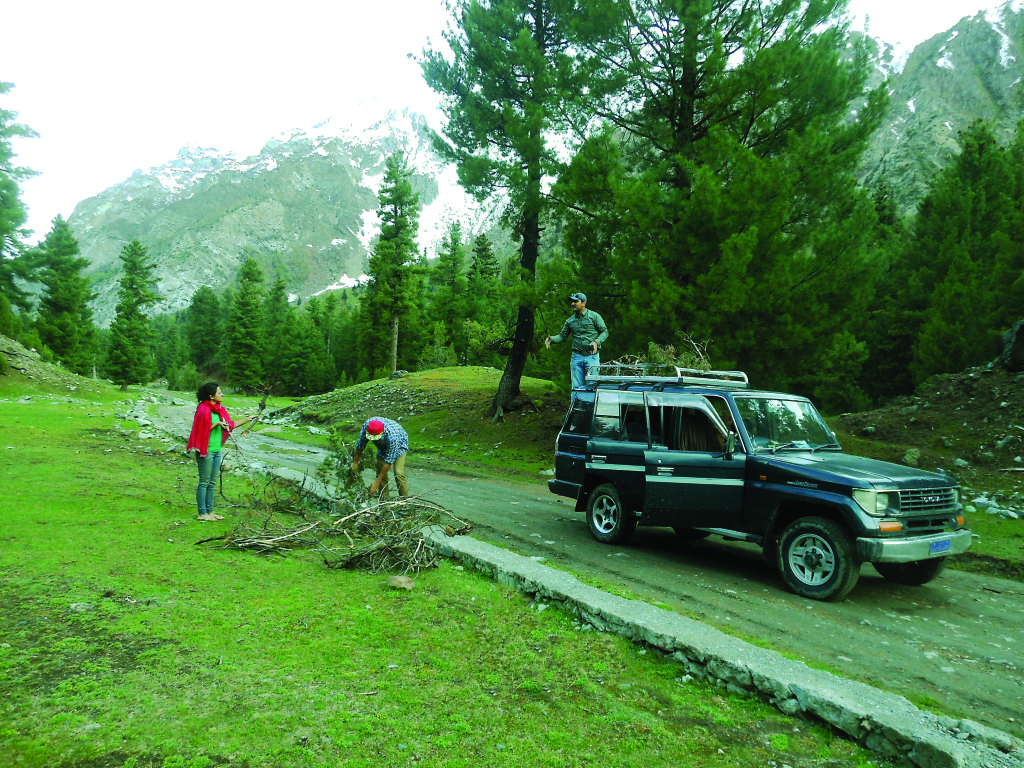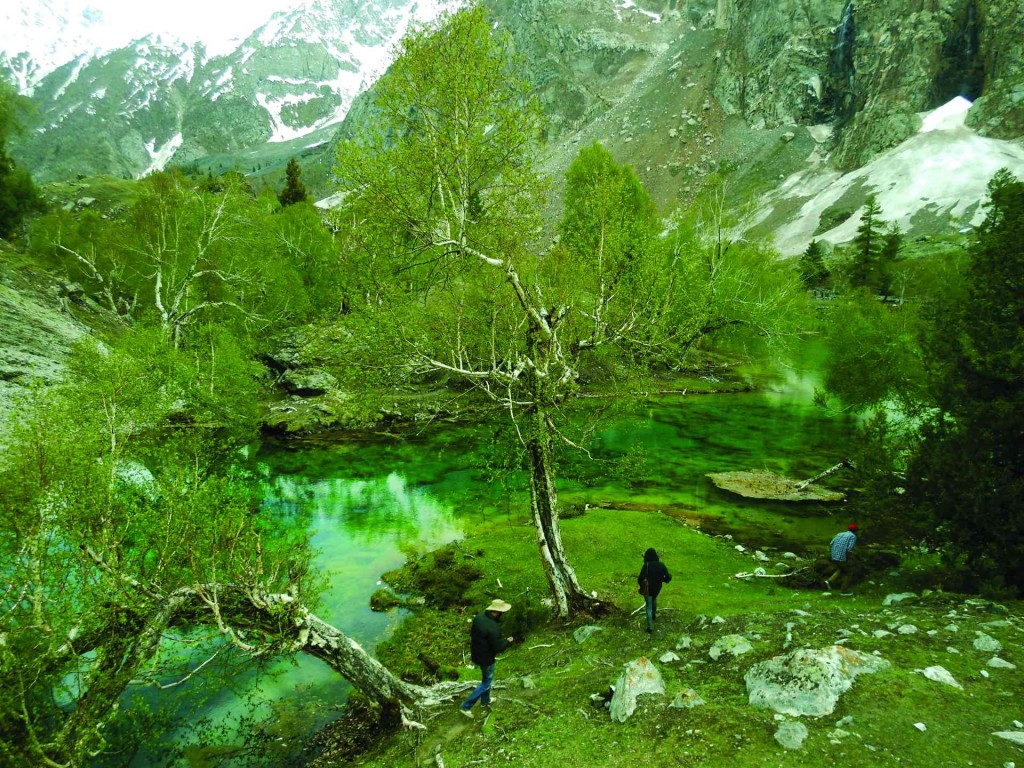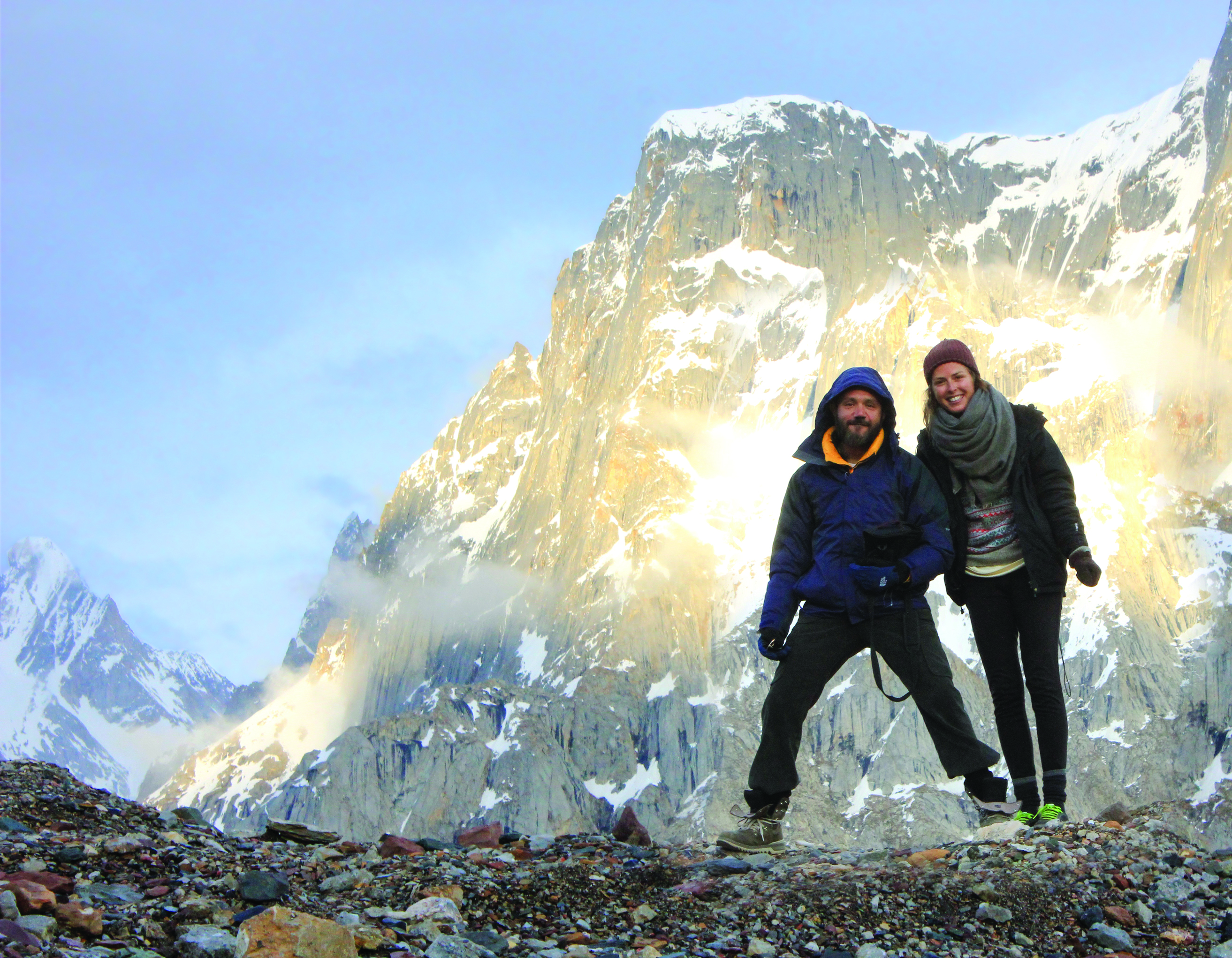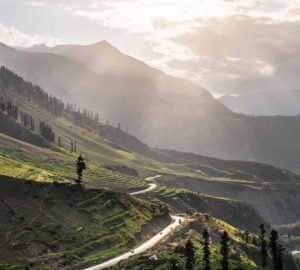 My friend Caroline was at the end of her two-year term working for a French bank in Pakistan and the two of us decided to write the final chapter of this stage of her life spent in a country she had grown to love, in its most ravishing corner.
My friend Caroline was at the end of her two-year term working for a French bank in Pakistan and the two of us decided to write the final chapter of this stage of her life spent in a country she had grown to love, in its most ravishing corner.
It resonated with her immediately when I suggested that we make not only a road trip to the wild and accessible north but venture out also to its wildest wilderness, the K2. This was a journey that, owing to its sheer remoteness and the dedication required to reach it, even I, in my nine years of trekking up north, had not experienced before.
It was final then: in addition to spending a breezy time camping and jeep safariing up north, with a few light treks in different conditions, leisurely trout fishing and punctuating our journey with the occasional stop at roadside food joints, breathing only mountain air and drinking stream water, we would acclimatize ourselves at Naltar to undertake what is considered the trek to end all treks – the K2-Gondogoro route.
I flew in from coastal Karachi to begin our journey northwards from the plains of Lahore. Caroline had already had her first taste of the high mountains ranges a few days prior through a yoga retreat in Chitral, which got her well warmed up with daily exercise, meditation and even a paraglide over the Hindu Kush. After a couple of balmy days in Lahore, she was ready.
At dawn, Haji’s nihari in the old Lohari Gate area of Lahore was dimly abuzz. Here, over deep bowls of steaming nihari and baking-hot naan (baked bread), we could already hear the mountains calling, beckoning to us with a gentle whisper faintly audible against the hiss of high wind tearing past barely concealed fangs for peaks. The imagination was alive. The prospects were tantalizing. We would see minus 30 Celsius on this trip, at a time when the rest of the country, even areas only 300km away from the Central Karakoram, were seeing 40 degrees Celsius during the day. We drive to an altitude of almost 15,000 ft (and higher) in parts of Pakistan, India, Nepal and Tibet, at which level some of the greatest Himalayan trails begin. The Karakoram Highway (KKH) is one of man’s marvels in that respect. And a monument to Sino-Pak relations, as they stand today.
Our friends Nadir and Tara would join us from Karachi for the milder half and quarter of the 40-day excursion, respectively. We would take a bus to Islamabad, where after another good meal, at my favourite Afghani restaurant in the capital, and a bit of shut eye, we would attempt the usually packed and weather-dependent two morning flights a day to Gilgit. The city, along with Skardu, is one of the gateways to the ‘real’ northern Pakistan, dominated by the Karakoram Range. The sharp spires of the Karakoram make even the greater Himalayan slopes eastward appear gentle. These are the most awe-inspiring of all mountains.

It’s a scarcely believable flight as one soars over Islamabad’s lush Margalla hills and into the white heart of the Karakoram, past Nanga Parbat – the country’s fifth 8,000m peak and only one belonging to the greater Himalaya. She’s the world’s largest monument, greater in magnitude than even Everest. In a few days we would meet the old girl again, at the base of her steepest slopes. This is visual flying at its best and occasionally the pilots will even allow a passenger to get a bird’s eye view of the landing which, already spectacular at Gilgit – as the plane darts into a tiny opening in the mountains for a strip to emerge – turns into one of the miracle landings in aviation at Skardu, as a Boeing 737 bravely circles the valley and flies excitingly close to bare mountain faces as it sheds altitude in order to be able to land.
This time though, we weren’t going to fly. Both the flights to Gilgit that morning were cancelled due to hostile weather and none of us were keen to take a chance the next day. Before long the four of us, after a brief call to a listed car rental company, with our luggage and quickly refunded ticket money in hand, were packed into a chauffeur-driven Land Cruiser that would drive us thirteen hours to Gilgit, for less money per head than our air tickets, in relative luxury-with USB stereo, reclining seats, air-conditioning and heating.
There is, reputedly, a hostile patch between Besham and Raikot along the KPK/Kohistan part of the way to Gilgit-Baltistan, which lasts about four hours. It is only relatively hostile if at all, with a crustier, more wild-west border town flavour next to the extremely cheerful and hospitable folk of Gilgit-Baltistan further northwards, whose warmth and gentility really puts the best of us to shame. It is a well-guarded bit of the Karakoram highway though, with frequent check posts, a seamless process of registration and even a system of moving vehicles along in secured convoy.
It is best to cross this patch during the day, which makes leaving Islamabad a necessity as soon the party’s hopes of flying fade. And they do fade on most summer days, as no confirmation is offered on flights to the Karakoram and the list of passengers – from previously cancelled flights, chancing it on yours – is long. Sadly, but understandably, the national carrier PIA is the only airline that flies this tricky aerial route straddling the world’s highest theatre of hostilities.
Past the rough patch, Nanga Parbat and the Raikot Bridge, the Karakoram Highway really comes into its own as a sequence of broad bends dancing all the way to China, compelling the bedazzled traveller to push along on a tidal wave of confidence.
 We headed to PTDC Gilgit, our classic abode in town with its garden-front bedrooms and their wooden decks. I could think of no place better to rest our numbed backsides. A good night’s sleep led to a sun-soaked breakfast of fried eggs and paratha with a hot jug of Hunza tea that must have been created with such a crisp high-desert morning in mind. For me, there was a real sense of homecoming as the familiar staff waved and smiled. I was back where almost all my previous northern grand adventures began. And this was going to be the grandest of them all. As the most experienced mountain-fiend in the group, I assumed my natural role as captain of this little expedition, taking up the reins with an old-fashioned talk on dealing with depression and minimizing personal friction in the high reaches under a slight scarcity of oxygen. We all laughed. It was time to get moving.
We headed to PTDC Gilgit, our classic abode in town with its garden-front bedrooms and their wooden decks. I could think of no place better to rest our numbed backsides. A good night’s sleep led to a sun-soaked breakfast of fried eggs and paratha with a hot jug of Hunza tea that must have been created with such a crisp high-desert morning in mind. For me, there was a real sense of homecoming as the familiar staff waved and smiled. I was back where almost all my previous northern grand adventures began. And this was going to be the grandest of them all. As the most experienced mountain-fiend in the group, I assumed my natural role as captain of this little expedition, taking up the reins with an old-fashioned talk on dealing with depression and minimizing personal friction in the high reaches under a slight scarcity of oxygen. We all laughed. It was time to get moving.
My local hero and friend Rahmat arrived. A key component of all my northern adventures, Rahmat personifies to everyone who comes across him these three qualities: solidity, warmth and refinement. Over the years he has become to me a symbol of everything I love about this mythical land. And in my associations, he is as inseparable from the north as the sight of snow teetering along the peaks. He’s like the Snow Leopard. Ibex. Rahmat would drive us in his CJ5 as he always has, to where my thoughts like to escape. A former jeep-safari guide, he runs a printing facility of his own at the local university and still takes time out for grand touring every time I visit.
Our first stop was the forested high valley of Naltar, two hours away from Gilgit and just off the road leading to Hunza. With a number of spectacular waterfalls and a powerful demonstration of the violence of white water as we made our way up a dreamlike path with a heavy glacial rivulet cascading right along, Naltar is a heavenly, Alpine stretch of ski slopes bejewelled by three lakes of emerald green and readily serves as a great welcome to the northern areas. The exquisite Naltar Lake at 11,400ft takes centre stage and offers sublime spots aplenty for pegging a tent or few.
Our campsite was along a small stream that flows from its icy source above in full view, offering a wonderful means to wash potatoes and other food ingredients, by their secure placement between large immovable stones in a sink of pebbles with ample aquatic pressure. It became our own mineral waterway køb viagra. Dinner was a wonderfully well cooked Chicken Karahi by Tara and Rahmat, in butter which we wisely purchased over cooking oil along with basic utensils during our stop in the bazaar of Gilgit – a great place to stock up on supplies, of anything from petroleum jelly and tents-for-rent to bakery items, vegetables, rope and dry fruit, most important of which to carry up is dried apricot, essential for naturally optimizing blood-oxygen levels at altitude, especially in moments of low blood pressure. The apricots release a torrent of oxygen to the brain, awakening it. At least that is how the locals describe the effect.

Naltar gets properly cold at night. It’s high, surrounded by snowy mountain peaks and bodies of half-frozen water close to campsite. The quality of one’s boots, sleeping bag, roll-up mattress and tent will make the biggest difference to one’s quality of life in the national parks, aside from a little humility, which the mountains inspire in spades. Waking up in Naltar was, as always a delight. A genuinely wholesome breakfast omelette of free range eggs was served lakeside by a local baba who operates a tiny rowboat and lives in one of the fairy-tale chalets that punctuate the Naltar hills aside from giant boulders, both of which I suspect would be very familiar to the bronze age tribes that lived in these valleys millennia ago. After breakfast, with a circuit of the lake and a crossing of the vigorous stream running right behind that feeds it, we perambulated up the adjoining hills and took wonderful pictures, whilst letting the high mountain air into our lungs, sharpening us up slightly.
Driving out of Naltar we all had a feeling I’d had before: this place deserves a trip on its own and half a day in no way does justice to even its fairy-tale folk, who appear like apparitions among the trees, emerging from the mist in shalwar kameez that must not be very different from the first. Most locals are Sheen or Yaskhun and resemble the stone-age mountain tribes of Afghanistan, as they appear in 19th century photographs today. With a sprinkling of Gujjars, miners of river gold, who also seem to exist in a bygone century on account of appearance and vocation, Naltar’s ethnic gene pool seems largely consistent. The population is about 5,000.
The moisture, descending from the high surrounding peaks and Naltar Pass fills up the valley a few times each day, in every season bar autumn. It’s a hauntingly beautiful oasis that, despite often being the first stop on my northern itineraries, is remembered as a high point long after the trip has ended. Its image of verdant mildness harrowingly punctuated by frightened trees bowing into a luminously clear green and blue lake resembles the landscape of a dream, and in some way the Zen gardens of Kyoto, which teases the forgone debate over whether life imitates art or vice versa.
But we had miles to go, so we packed in our gear, the tents already stowed by Rahmat, and crawled out of Naltar valley. The terrain driving northwards was more arid, displaying a multitude of browns, topped by generous layers of white. The Aga Khani community, known for its exceptional ability to organize social services like education and healthcare, has made an indelible mark here, with a sprouting of schools, clinics, sustainable welfare projects and the maintenance of heritage sights, to name a few valuable contributions over decades past.





